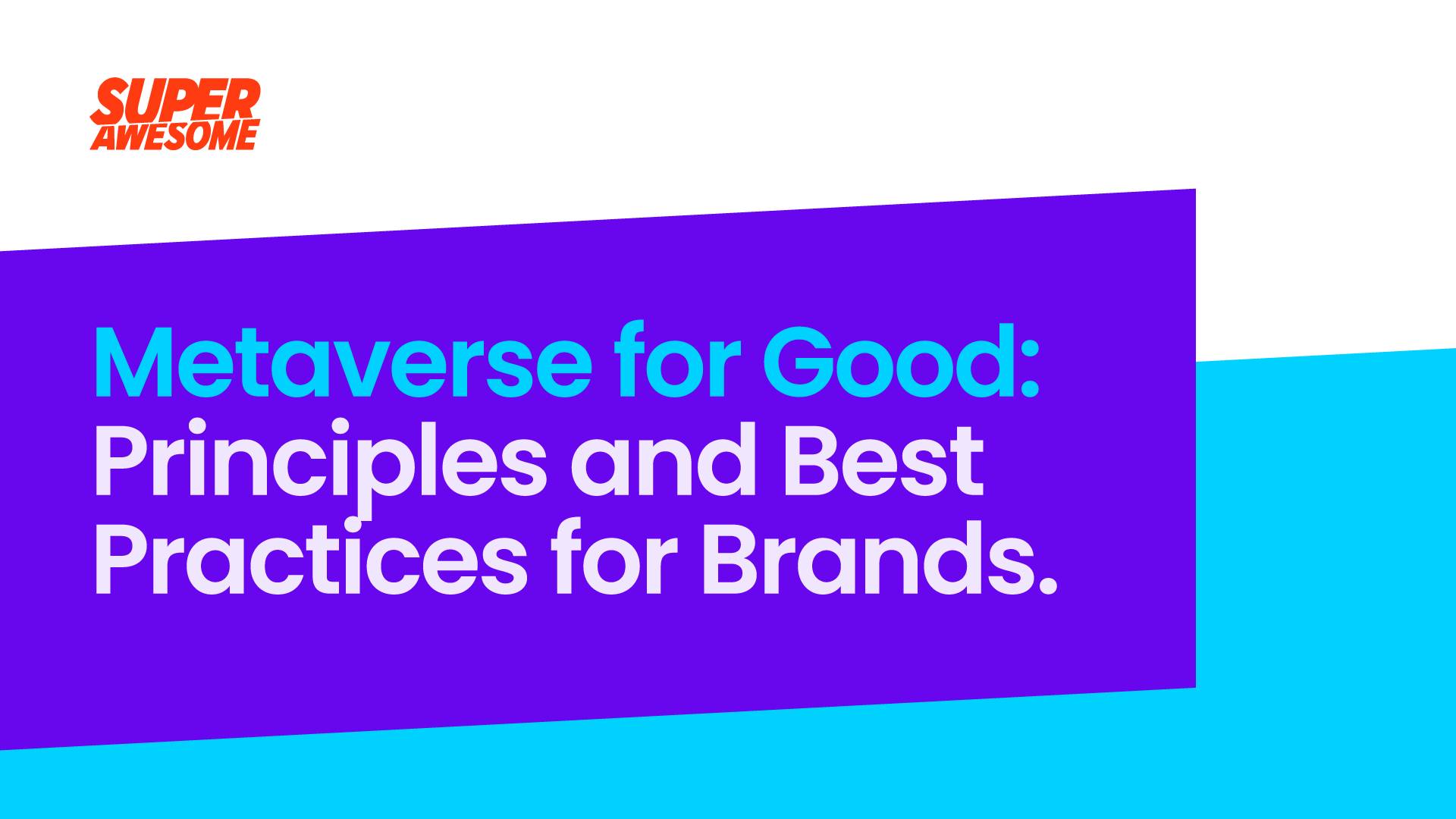As a brand you’d be hard-pressed not to have metaverse envy, given all the breathless reporting in the media about super-cool custom experiences created by top brands in luxury goods, sportswear, fast food franchises, beauty, financial services, and more. Every agency worth its salt has stood up a metaverse team that facilitates activations to capture the imagination and affinity of the next generation.
And they’re smart to do so. People are flocking to metaverse-like worlds in droves, be it to Roblox, Fortnite, Animal Crossing or Decentraland. They engage with brands by playing their games, talking to influencer avatars or even branded non-player characters (NPCs), and buying virtual goods. Meanwhile, developers and agencies are coming up with increasingly creative ways to make an impact in the metaverse, be it through building custom experiences, integrating with existing hit games, creating new digital IP via non-fungible tokens (NFTs), or sponsoring virtual spaces that mirror the real world.
Addressing challenges head on
While the metaverse is an exciting new frontier, as with all new mediums, there are challenges and risks. Many of the rules and best practices that govern digital advertising and content on the (old!) Internet have yet to be adapted to this new world of 3D, immersive, persistent experiences, where branded content comes in infinite forms and national borders do not obviously exist. The metaverse takes the notion of ‘native advertising’ to a whole new level, and with that comes new responsibility for developers, brands and agencies to support a healthy, vibrant and fair metaverse for all.
As brands build experiences in the metaverse, important questions are cropping up, such as:
- How do we differentiate branded content from organic content? What are appropriate disclosures for advertising?
- How do we think about local ad regulations in different countries when metaverse platforms are inherently global?
- How do we ensure campaigns reach their intended audience and are age-appropriate to the audience most likely to see them?
- How do we navigate the wide range of quality among metaverse experiences, and encourage positive environments for our brand presence?
The strategic partnership announced in May between WPP and Epic Games is helping brands answer these questions and build solutions. WPP is working with SuperAwesome, an Epic Games company, to deepen its understanding of online safety and privacy and help its campaigns engage younger audiences responsibly.
SuperAwesome’s extensive work on metaverse activations for multiple brand categories led them to develop a set of best practices which brands and developers are using to address the key questions above.
Some starting principles
As you think about engaging in the metaverse, there are four core principles you can apply to ensure the best experience for everyone. They are:
- Understand your audience and ensure both your content and the context are age-appropriate.
- Review the mechanics of any experience. Take a particularly close look at monetisation practices and community management.
- Avoid blurring of advertising and entertainment content. Err on the side of very clear disclosure when content is indeed an ad.
- Stay abreast of best practice developments, in particular guidance from self-regulatory bodies like CARU (Children’s Advertising Review Unit) in the US and the UK’s CAP Code.
Best practice checklist
Once these principles are understood and addressed, they can be turned into a more specific checklist of things to look out for when you are considering either: 1) building your own branded experience, or 2) integrating your brand into an existing game.
- Consider whether the content is appropriate for the age of the audience you’re trying to reach: Metaverse-like destinations today generally do not offer demographic targeting capability. This means that you will have to select your audience contextually, i.e. by choosing the game or experience that most appeals to your target audience. If you’re looking to reach young audiences, it’s particularly important to ensure your experience (or the game you integrate with) takes children’s maturity level and level of online experience into account when designing game features. In addition, consider whether the content is appropriate to that age. For example, you may want to avoid realistic depictions of violence, depictions of activities that may be unsafe for young audiences in the real world, or content they may find disturbing.
- Consider the game’s community management practices: Examine whether a game has moderation practices, tools and processes in place that enable user safety and privacy, such as blocking/reporting functionality, or parental controls. Check whether there is a policy that addresses users that violate the terms of service and how that is communicated to users.
- Avoid games that incorporate deceptive monetization practices: Unclear monetization practices should be avoided. As games increasingly earn revenue through in-game purchasing and microtransactions, avoid player-vs-player pay-to-win or pay-to-progress mechanics. Many audiences – and especially kids – may not understand the trade-off of cost and the probability of winning. Also avoid experiences that make use of paid loot boxes or other gambling and lottery-style mechanics that don’t enable players to know what they are purchasing up front and may cause players to be dissatisfied with what they buy.
- Avoid blurring of advertising and entertainment content: It is important that advertising is not presented in a manner that blurs the distinction between advertising and non-advertising content. Although the metaverse provides new opportunities for seamless integration between brands and content, the same disclosure principles remain: players must be made aware when they’re being advertised to, whether by entering a branded world, or engaging with sponsored content in an existing game. For more detailed guidance on this, see Superawesome’s eBook on eDisclosures.
- Incorporate self-regulatory guidelines & best practices: Be sure to monitor developments and guidance from key self-regulatory bodies (such as CARU in the US and the CAP Code in the UK), and integrate their best practices for engaging with young audiences. These are fast-changing, especially in relation to advertising disclosures and in-game mechanics that may be considered unsuitable for younger audiences. They can cover a broad range of topics from gambling, to misleading claims on the environment, to health claims, and more…
While it may feel daunting to build for this new medium, employing these best practices will help improve the experience you are able to bring to users. No matter what kind of advertising or marketing campaign you’re building, keeping the best interest of your audience top of mind is always the best strategy.





